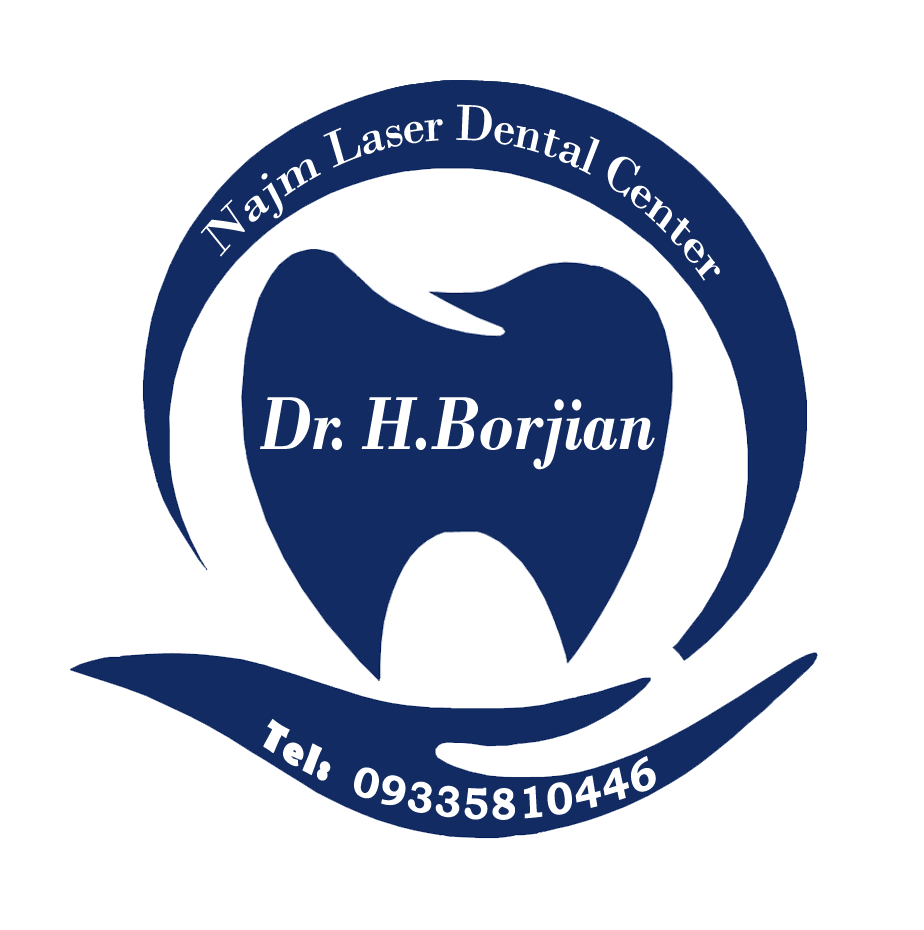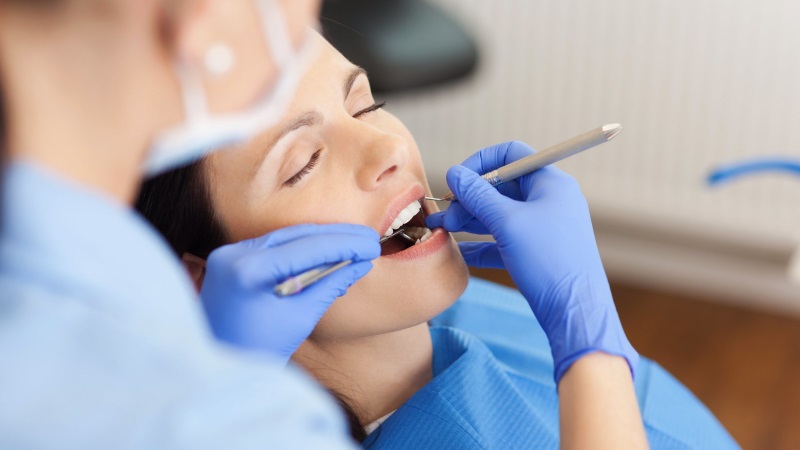Examining types of periodontal surgery or gum surgery
Periodontal surgery or gum surgery may be performed in some situations to treat gum diseases such as gingivitis or periodontitis.. This surgery treats gum diseases. In this article from Dr. Hossein Borjian's website The best cosmetic dentist in Isfahan We examine all types of periodontal surgery or gum surgery.
It can also be effective in healing any damage caused by the following:
- Eliminate bacteria and infection
- Prevent tooth loss
- Reducing the gum gap between the teeth
- Regrowth of damaged bones and tissues
- Jaw reshaping to reduce the risk of bacterial growth in bony crevices
Treatable problems in gum surgery
Periodontal surgery can treat many diseases including swelling of the gum treat. Gum diseases such as gingivitis and periodontitis may require surgery. Gingivitis is a mild gum disease that can cause redness, swelling and bleeding of the gums. Often, gingivitis occurs due to poor oral hygiene, plaque and tartar deposits. Professional and appropriate treatment can cure these diseases.
Periodontitis is a more severe form of gum disease in which gum inflammation worsens and progresses, leading to an inflammatory response that destroys bone and tissue.. During this inflammatory process, the gums begin to separate from the teeth. This creates spaces called pockets, which in turn trap bacteria and lead to infection.. It can even lead to falling teeth and bone damage.
Types of gum surgery methods
The type and severity of your gum disease depends on the type and severity of your gum disease.. Before surgery, the surgeon cleans the gums. A procedure known as deep scaling can remove tartar and bacteria from the teeth and gums..
Another method called root planing can smooth the root surfaces of teeth, meaning there are fewer places for plaque and bacteria to accumulate.. This method removes any tartar that is placed on the root.
Flap surgery
This surgery is useful for people who have mass deposits in the deep parts of their teeth. This procedure involves lifting the gum from the tooth to remove tartar deposits. After the surgeon cleans the area and removes the tartar, he stitches the gums back in place around the tooth.. Sometimes, the bone may need to be reshaped during the procedure.
Bone grafting
When bone surrounds the root of the tooth and causes damage, the surgeon may consider bone grafting.. This procedure involves replacing the damaged bone with new bone. This bone may be the person's bone, artificial bone or donor bone. The purpose of bone grafting is to hold the tooth in place and help it grow back.
Guided tissue regeneration
During this procedure, the surgeon places a small piece of mesh material between the bone and the person's gum tissue. This substance prevents the growth of the gum into the bone space and allows the bone and connective tissue to grow again..
Tissue transplant
The type of surgery depends on several factors such as the condition of the gums. A receding gum line, known as gum line recession, is caused by loss of gum tissue and may require soft tissue grafting to prevent disease progression.. During this procedure, the surgeon typically removes tissue from one part of the body and reattachs it to the area where the gums have receded.. Tissue is often removed from the roof of the mouth. Tissue grafting not only prevents further damage, but also covers exposed tooth roots..
Other treatment options for gum disease and inflammation include::
- laser therapy: Although no current evidence fully supports laser therapy for the treatment of gum disease, some dentists use it to repair damaged connective tissue..
- Tissue stimulating proteins: This method involves using a gel containing protein to stimulate bone and tissue growth.

Preparation for gum surgery
A few weeks before the operation, it may be necessary to take some medications, such as aspirin (Bayer, Bafarin)Stop taking painkillers and blood thinners. Most dentists recommend not smoking or drinking alcohol at least 24 hours before the procedure. Your doctor may give you antibiotics before the procedure to reduce the chance of infection.
You should also arrange for someone to take you home after the procedure. Anesthesia, sedation, or other medications you receive during the procedure may affect your reaction time. It means that you may not be able to drive after that. Before a person performs gum surgery, the dentist performs an examination to make sure the surgery is safe.. During this examination, the dentist will most likely perform the following steps:
- He examines the patient's mouth and jaw to check the stability and health of the teeth.
- Check for any infections, abscesses, or other lesions that could complicate surgical recovery.
Expected events in gum surgery
Most gum surgery takes about 2 hours. In some cases, surgery requires that the person be unconscious or semi-conscious during the procedure. In other cases, surgery just involves using a local anesthetic to numb the gums. The injection of anesthetic can be a little uncomfortable. During this procedure, the dental surgeon uses sterile equipment, including instruments and cloths, to reduce the risk of infection..
After making small cuts or incisions along the gum line, the dentist lifts the gums away from the teeth.. This allows the dentist to better see the roots so they can remove and remove plaque, tartar, or infection.. After this deep cleaning, the surgeon can perform other procedures such as gum reshaping, bone remodeling procedures, or other planned procedures.. After completing the dental surgery, the surgeon sutures the gums using fine threads. The dentist pulls the stitches 7 to 10 days after the surgery.
The Instagram page of Dr. Hossein Borjian, the best cosmetic dentist in Isfahan
Recovery after gum surgery
Your recovery depends on the severity of your illness, your overall health, and the type of surgery you had. Follow your dentist's instructions carefully. Normally, you can expect some bleeding and minor discomfort after any type of dental surgery. You should be able to resume most normal activities about a day after surgery.
Smoking can interfere with the healing process of your body after surgery. Therefore, avoid smoking until after periodontal surgery. Using an antiseptic mouthwash may prevent infection after surgery. Recovery time depends on the type of operation. Typically, people need to take pain medication in the days after gum surgery. Dentists may also recommend the following strategies:
- Not smoking
- Avoid vigorous exercise
- Eating soft foods in the days after surgery
- Use an antiseptic mouthwash to keep the area clean and prevent infection
- 1 or 2 weeks after surgery, you should visit your dentist for re-evaluation. During this appointment, the surgeon will check how the gums are healing and, if necessary, pull the stitches..
A person's gums will look and feel different after surgery. Gums and teeth heal, become firmer and stronger. Some people's teeth may be sensitive to cold or hot temperatures. This tooth sensitivity can be relieved by using hypoallergenic toothpastes.
Prevention of gum disease
Since the gum disease Caused by bacterial overgrowth, plaque and tartar build-up, good oral hygiene is usually effective in preventing and reversing this disease.. In most cases, regular dental care including brushing and flossing twice a day is enough to prevent gum disease..
Complications of not treating gum disease
If left untreated, gum disease may lead to various underlying diseases such as cardiovascular disease, diabetes, and premature and underweight babies.. Gum disease can also become a serious health condition that affects the teeth, gums, and bones, leading to infection and death of bone and tissue.. This condition may require extensive surgery to repair and treat the disease. Reducing risk factors, maintaining oral and dental hygiene and performing routine dental appointments can reduce the risk and severity of gum disease..
Attention :
- The scientific accuracy of the above article should be consulted with Dr. Borjian, a specialist, in person Gum and bone grafting be confirmed.
- This article was managed and published by the site admin.
Read more :
Appropriate antibiotics for dental infections
The main causes of bad taste in the mouth



